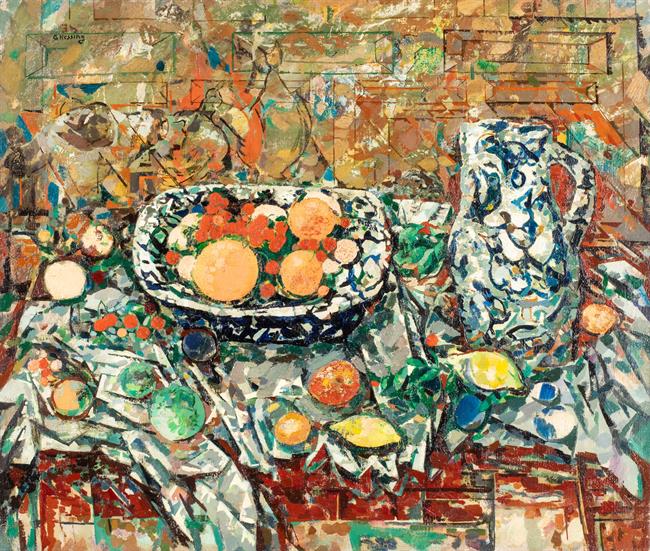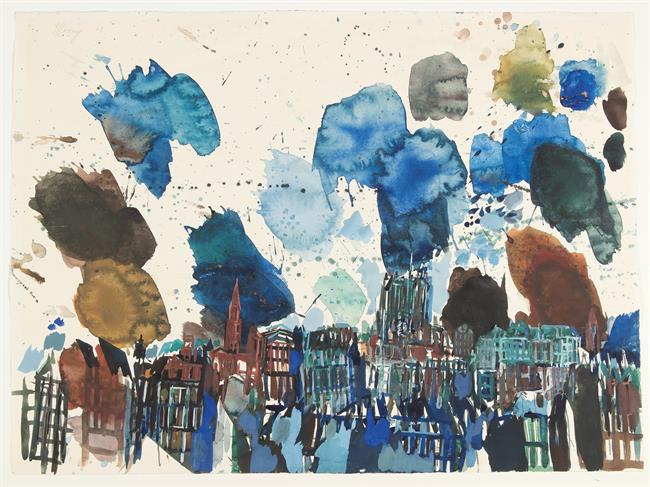 Still Life with Fruits and Jug
1957
Still Life with Fruits and Jug
1957
Gustav Hessing
Czernowitz 1909 - 1981 ViennaGustav Hessing was born in 1909 in Czernowitz, Bukovina (then Austria, now Ukraine). He studied at the Academy in Vienna under Ferdinand Andri and Karl Fahringer. Under the Nazi regime, Hessing was banned from practicing. In 1946 he was a co-founder and the first president of the artists' group "Der Kreis". In 1957 he was appointed professor and head of a master class at the Academy of Fine Arts in Vienna. Hessing was a member of the Vienna Secession and received the City of Vienna Prize for Fine Arts.
Hessing, who devoted himself primarily to portrait, landscape and still life painting, was intensively involved with the painting of P. Cézanne, who, along with Edward Munch and and Richard Gerstl, had a decisive influence on him. His early works from the interwar period have a strong colorfulness to them and are associated with Austrian Expressionism. In the period of the Second World War he painted ostensibly gloomy watercolors, due to formative experiences of loss, which are among his main works. Towards the end of the 1940s Hessing began to paint representational abstractions, which later became geometric systems of signs. From the 1950s he was influenced by Surrealism and Cubism. In the circle of the "Phantasts" around Edgar Jené, dark, mystical works with a surreal touch then emerged.
Today his works can be found in many collections, including the Austrian Gallery Belvedere, the Museum Leopold and the collections of the Province of Lower Austria.
-
Still Life with Fruits and Jug 1957
-
City View 1963

 City View
1963
City View
1963